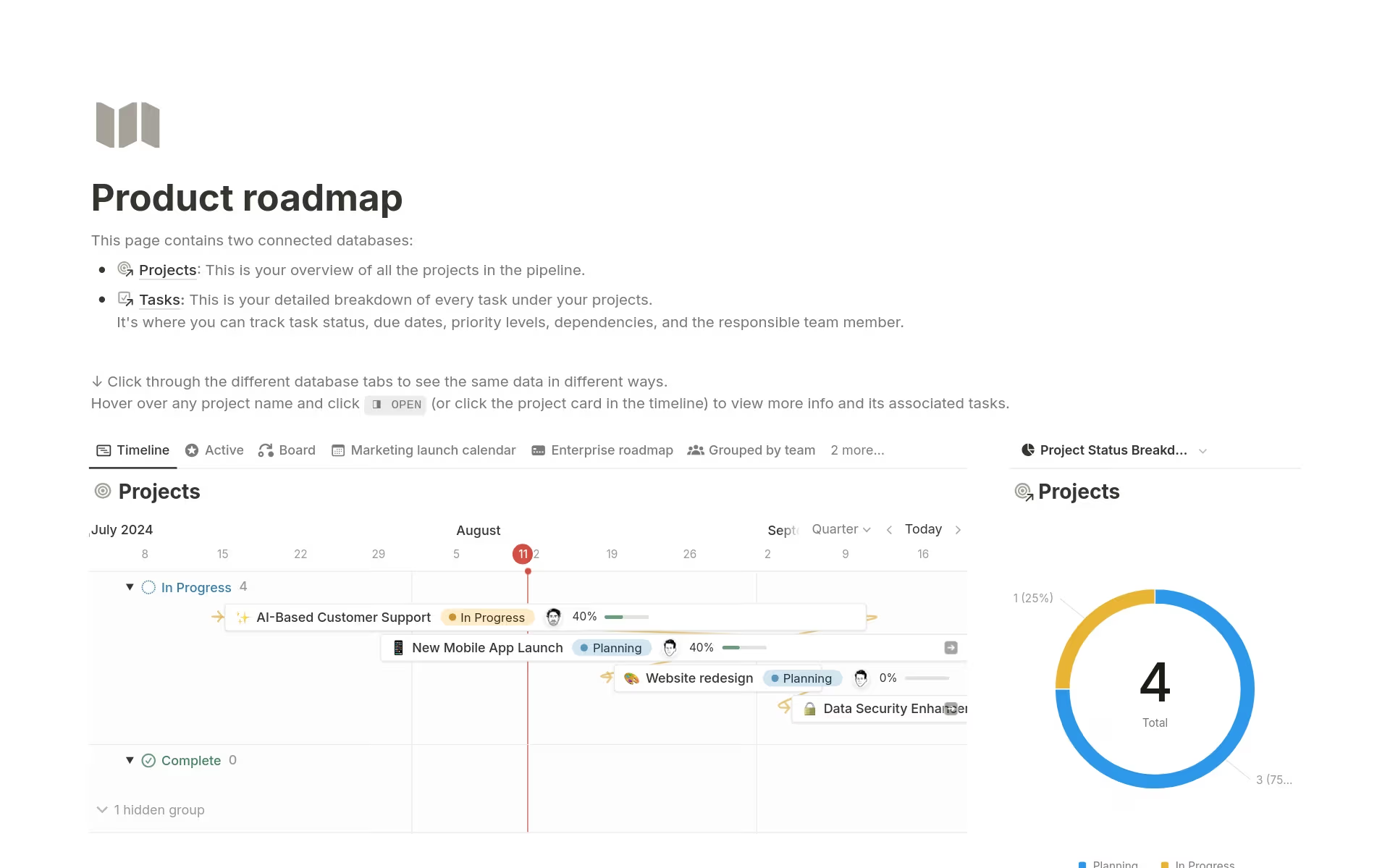A Product Roadmap is a strategic guide that outlines the vision, direction, priorities, and progress of a product over time. It facilitates communication among stakeholders, aligns the team's activities with the product's strategic goals, and helps in identifying and addressing gaps and overlaps in the product's development process. A Product Roadmap template, especially when designed within a versatile tool like Notion, can simplify this complex process by providing a customizable framework that organizes and visualizes the product's journey, thereby aiding Product Strategists in making informed decisions and adjustments.
Before you get started on creating your own Product Roadmap template, take a look at these Product Roadmap templates below to help make the process easier.
What Should Product Roadmap Templates Include?
Choosing the right Product Roadmap Template is crucial for effective product strategy planning. Here are key components to look for in a high-quality template:
Clear Milestones: The template should clearly outline key milestones. This helps in tracking progress against set goals and timelines.
Flexible Time Frames: A good template will accommodate different time frames, whether you're planning for months or years ahead.
Resource Allocation: It should include sections for detailing resource allocation to ensure that all aspects of the product development are adequately funded and staffed.
Stakeholder Input: Look for templates that provide space for input from various stakeholders, enhancing collaboration and alignment across departments.
Ultimately, the right template will not only guide your product development journey but also enhance team alignment and communication.
What Should Product Roadmap Templates Avoid?
Choosing the right product roadmap template is crucial for effective strategic planning. However, certain elements can hinder rather than help. Here are three key components to steer clear of:
Overly Complex Features: Avoid templates that include too many intricate features which can complicate the roadmap's clarity and usability. Simplicity fosters better understanding and communication.
Fixed Time Frames: Templates that rigidly define time frames can restrict flexibility. Opt for those that allow adjustments to timelines as project scopes evolve and new insights are gained.
Generic Strategies: Steer clear of templates that generalize strategies across different products. Customizability is essential to address specific product needs and market dynamics.
Remember, the best templates are those that enhance clarity and adaptability, helping teams to focus on execution and strategic alignment.













